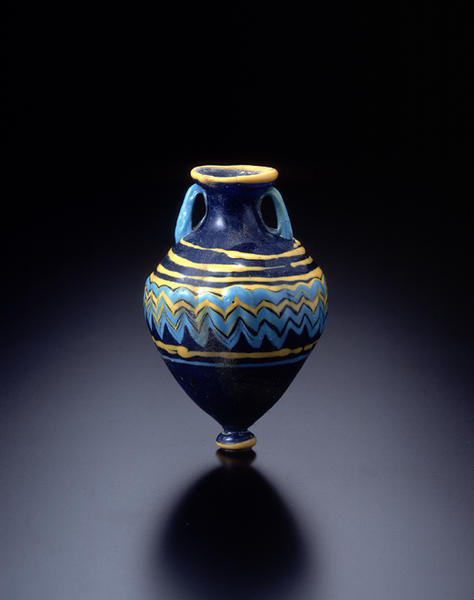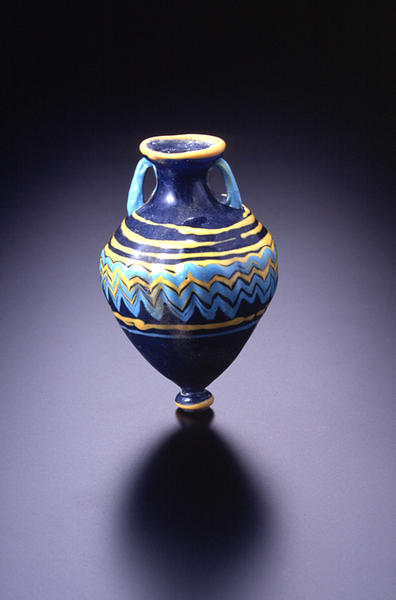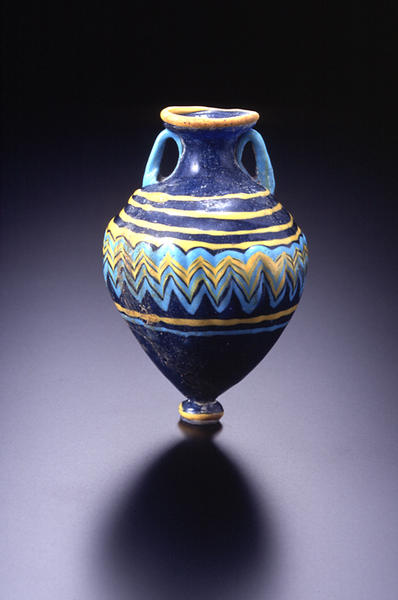両手付小壺
- 東地中海地域 ロードス島か
- 紀元前6-紀元前5世紀
- ガラス
- H-8.3
紺色のコアガラス製容器。胴部は膨らみ、丸みをおびた肩部から伸びる円筒形の頚部の先端に口縁が付けられる。底部には瘤状の小さな脚が付く。両側には、肩から口縁部直下にかけて青緑色ガラスの把手が貼り付けられる。肩部から胴部にかけて黄色と青緑色のガラスを螺旋状に巻き付け、胴部中央を上下に引っ掻いてジグザグ文を作り出している。表面にはその時の溝が残っている。口縁部と底部の縁には黄色のガラス紐が巻き付けられる。このような尖底あるいは丸底の容器は、金、ガラス、陶器などで作られた円筒形の台に載せて使用された。ギリシア陶器のアンフォリスコスを模した形で、当時、非常に珍重された高価な香油を入れる容器として使われたのだろう。
Catalogue Entry
Vessel made from cobalt core-formed glass. The body swells, while the rounded shoulders rise to a cylindrical neck with a mouth rim attached to its top. The base has a small lump-shaped foot. Handles made of turquoise glass have been attached at each side of the vessel, running from the shoulder to just beneath the mouth rim. A spiral pattern of yellow and turquoise glass wraps around the vessel from shoulder to body, creating a zigzag pattern that moves above and below the center of the body. The surface shows traces of the grooves made when this pattern was applied. Yellow glass threads have been wrapped around the mouth area and the base edge. This type of constricted or rounded base vessel was made to be placed on a cylindrical stand made of gold, glass, or ceramic. This shape is based on the Greek ceramic form known as an amphoriskos and was probably used to hold perfumed oil which were extremely expensive and rare during this period.


